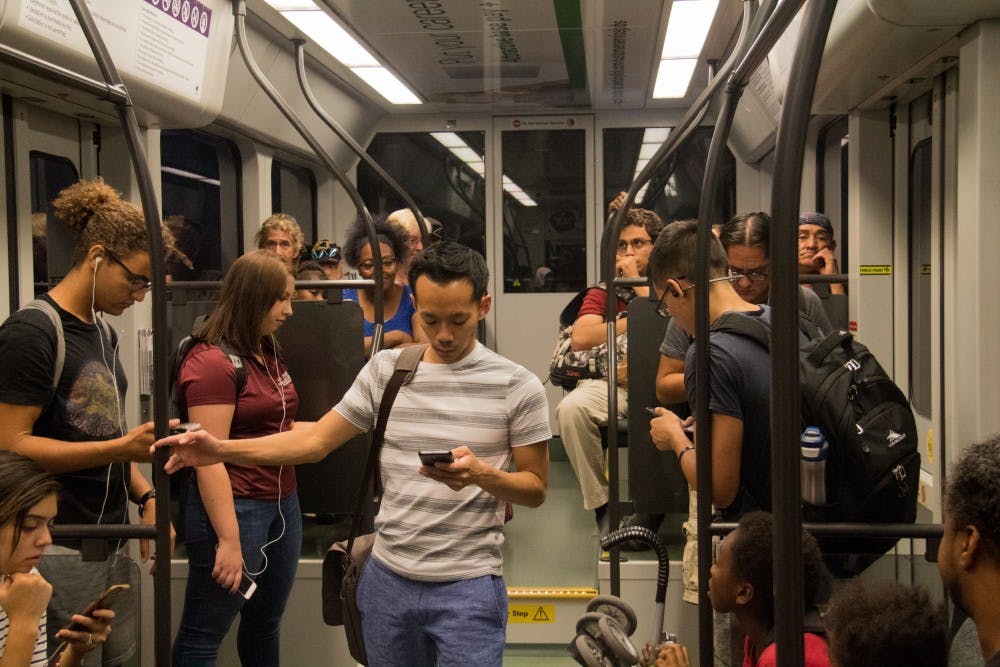Paying for college is no small task. At ASU, aspiring Sun Devils can expect to shell out upwards of $27,000 for a full year’s worth of academic expenses; for out-of-staters that number leapfrogs past $40,000.
But it’s not just about paying for books and classes. For those who commute between campuses, getting around can be expensive. And though intercampus shuttles are a convenient way to get from Point A to Point B, the shuttle schedule may not always mesh with individual needs.
Getting a car is an option — but an oftentimes costly one. If a student can put together the money, a slew of additional responsibilities awaits them. From insurance to gas to road misfortune, the costs of owning and maintaining a car can quickly tally up.
For those unable to afford owning a vehicle, public transportation facilitates student mobility, and many of the transit routes operating within the city have stops at every one of ASU’s campuses.
Students can cut back on living expenses by making use of services such as Tempe’s Orbit bus or the Valley Metro Light Rail or city bus. Since these cover much of the city, students can also use them when looking for transportation off-campus.
However, using public transportation is not without its hassles, said ASU community health freshman Joselyn Angel. One complication that the 19-year-old encounters on the light rail is the issue of security.
“It’s not always safe to ride alone,” Angel said.
Students shouldn’t let a negative experience deter them from continuing to use public transportation, said Katherine Fritcke, a Valley Metro spokesperson.
“Personal safety and security is obviously something that people care about very deeply,” she said. “If people feel uncomfortable, they automatically take their own safety into account.”
Fritcke maintained that uncomfortable situations are very much the exception and not the norm.
Fritcke cited a ridership study carried out by Valley Metro and said the bulk of student passengers' concerns lay elsewhere.
“We recently did a survey with ASU students,” she said. “We found that their worries…(were) mostly financial, and being able to pay for the fares themselves.”
Fritcke also said collaborations between Valley Metro and ASU offer opportunities tailor-made for students on a budget, such as the U-Pass, which grants students access to unlimited light rail rides during the academic year for $200.
Bicycling and longboarding are also popular alternatives for students on the move.
These options are particularly handy for moving from class to class, and ASU encourages cycling by way of the many bike lanes present on campus roads, with plans for further bike development in the works.
One development that has recently seen a surge is bike sharing. With 300 bikes and 32 stations operating from downtown Mesa to downtown Phoenix, GRID offers another transit alternative.
Bicycle check-out stations are available on ASU campuses, and information regarding rates and pricing can be found on the program’s official site.
Thomas Tomczyk, manager of The Bicycle Cellar, a bike shop located at the Veterans Way and College Avenue transit center in Tempe, said he thinks the city’s bike sharing programs are a welcome enhancement to what public transportation has to offer.
The bike sharing programs would help people rediscover the convenience of bicycles as well as facilitate a healthier lifestyle, he said.
“More bikes available for public use is always a good thing,” he said. “It’s a gateway drug."
Reach the reporter at sleal2@asu.edu or follow @journaslam on Twitter.
Like The State Press on Facebook and follow @statepress on Twitter.




